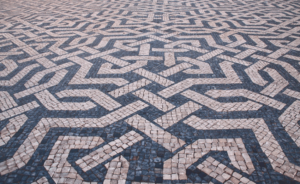‘Porcelain is essentially made of kaolin, sand and the mineral feldspar’

Vista Alegre – the country’s most famous porcelain brand – celebrates its 200th anniversary.
The factory in Ílhavo, founded in 1824 by José Ferreira Pinto Basto, has remained relevant for two centuries thanks to its quality, ability to reinvent itself and focus on the future.

An exhibition celebrating the bicentennial can be found in the Ajuda palace in Lisbon, where even today tableware from Vista Alegre is used in state dinners. ‘We not only want to show the finished products, that represent the history of Vista Alegre, but also elements from the factory itself, such as the carts in which the pieces are waiting to go into the oven or the moulds’, says Filipa Oliveira, who shares with Anísio Franco the curatorship.

‘Many Portuguese have a close relationship with Vista Alegre porcelain because it passed through their homes’ argues Anísio Franco, warning future visitors about the possibility that there are few pieces they will recognize.

The Vista Alegre factory initially began by manufacturing utilitarian objects in glass, such as jars and bowls but always with a quality that can be seen in the execution and decoration. In 1880 it discontinues glass production and starts dedicating itself exclusively to the manufacturing of porcelain, of greater importance to the national industry.

The first pieces were of imperfect soft paste porcelain, called ‘stone powder’ crockery. To produce high-quality porcelain, a clay capable of supporting the fusion of components was essential: kaolin. In 1832 a white clay – until that time used to whitewash homes – was accidentally discovered that later proved to be the sought-after kaolin.

The factory then hires specialized craftsman and accomplished painters and the factory establishes itself in the 19th century as a producer of true porcelain executed to tremendous perfection. Victor Rousseau, a prestigious French draftsman and painter who was exiled in England, is hired and gives the factory its own directive. He founds the factory’s first School of Painting responsible for teaching generations of masters to uphold the high level of artistry.

‘It is very important to know the genealogy of the masters of Vista Alegre to perceive each production period (f.e. neoclassical forms or already romanticism)’, says Anísio Franco. ‘Each one brought knowledge and taste of their own that marked what came out of the factory.’

In the 80s, a partnership with the businesswoman and collector Mildred Mottahedeh gives Vista Alegre access to the North American market, allowing the company to make pieces for the White House and the Rockefeller family.

This year, Portugal’s most famous player in the history of football– Christano Ronaldo – bought 10% of the capital of Vista Alegre with the aim of extending the company in the Middle East, where Ronaldo is playing nowadays.

The turnover of Vista Alegre in 2023 amounted to 130 million euros.
Seventy percent of the production is exported, especially to Germany, France, Spain, Italy, the US and Brazil.
The exhibition brings together 400 pieces and can be seen at the Ajuda Palace in Lisbon, until May 31.
Enjoy the week Aproveite a semana








